Coronavirus & Orange Farm
How a crowded clinic makes it work during Covid-19
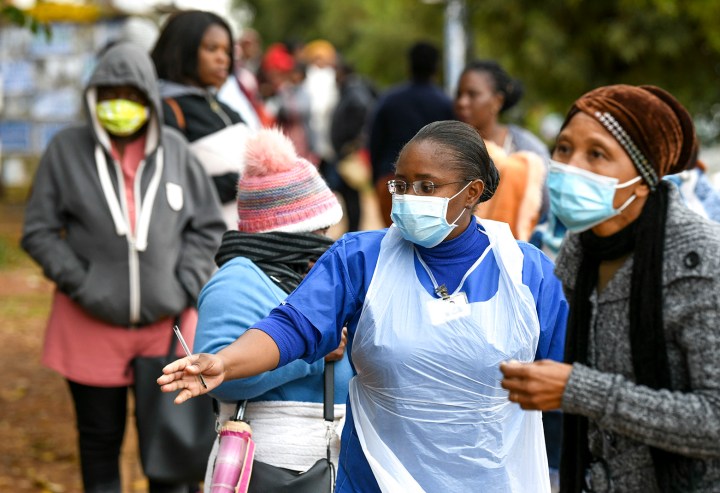
Simple interventions, guidance and commitment to a plan for the new normal are going a long way to making clinics ready and safe.
Some paint, some masking tape and a big dose of commitment to an implementable plan of action – these are part of a smart fix to a physical distancing nightmare for a crowded community health clinic.
On any given day, up to a thousand people file through the gates of the Stretford Clinic in Orange Farm, a settlement on the southernmost rim of Gauteng. It’s a crush of bodies that translates into a massive concern for adherence to the 1.5m distance rule to stay safe from spreading Covid-19.
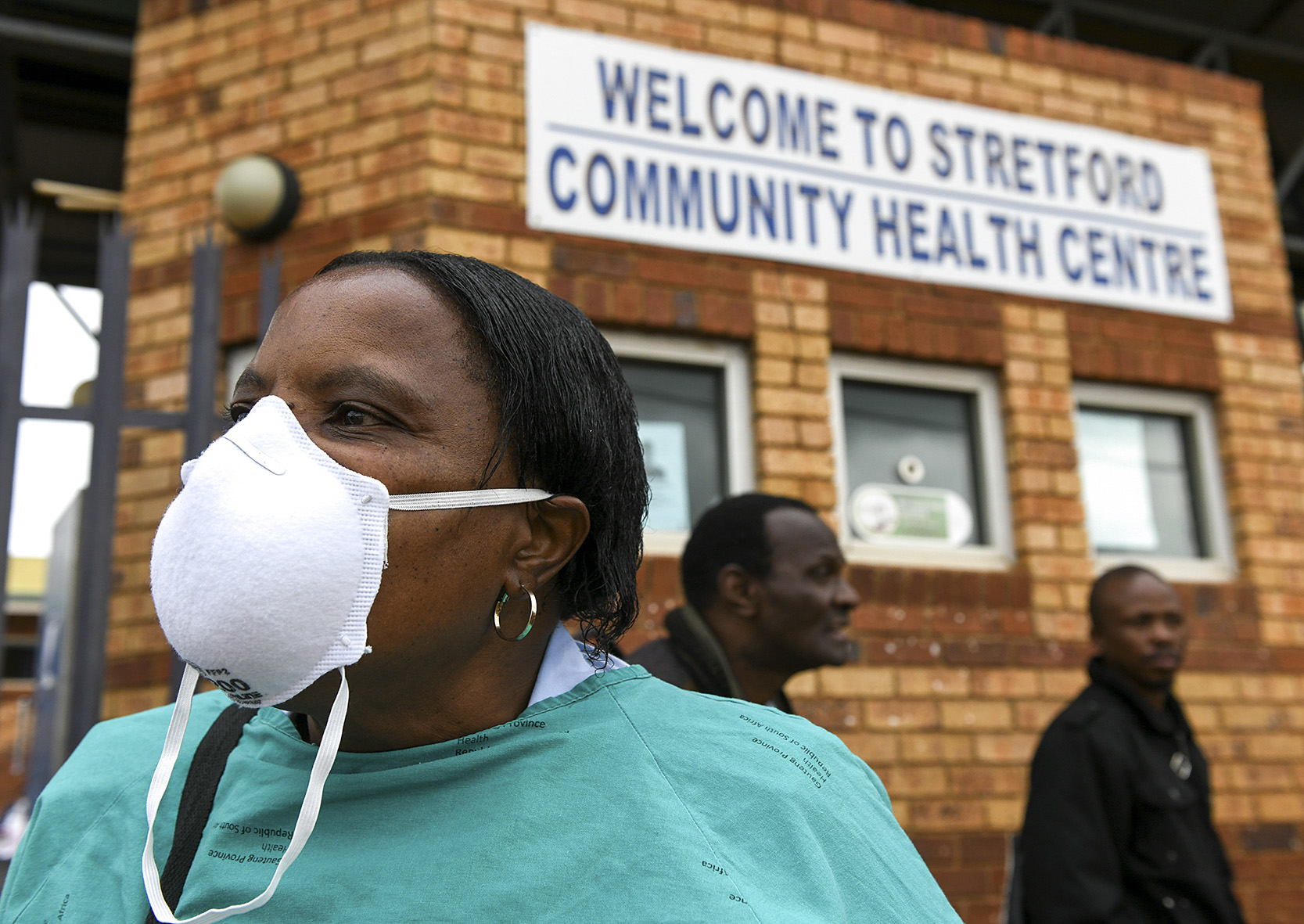
Operations Co-ordinator Sister Jabulile Mthembeni. (Photo: Chris Collingridge)
That was till about two weeks ago when a team of public sector clinicians and public health specialists stepped in. Their aim was to make this community clinic one of six pilot clinics to launch a simple, but comprehensive preparedness programme for clinics to respond and operate during a pandemic.
Lynne Wilkinson of the International Aids Society is a specialist in differentiated public healthcare with vast experience in setting up response programmes to support treatment and management of HIV, TB and Ebola. Wilkinson is part of the team spearheading the initiative. She says the aim is to help clinics across the country run optimally for general health services, prepare them for Covid-19 screening testing and referral, and to keep all patients and healthcare workers safe.
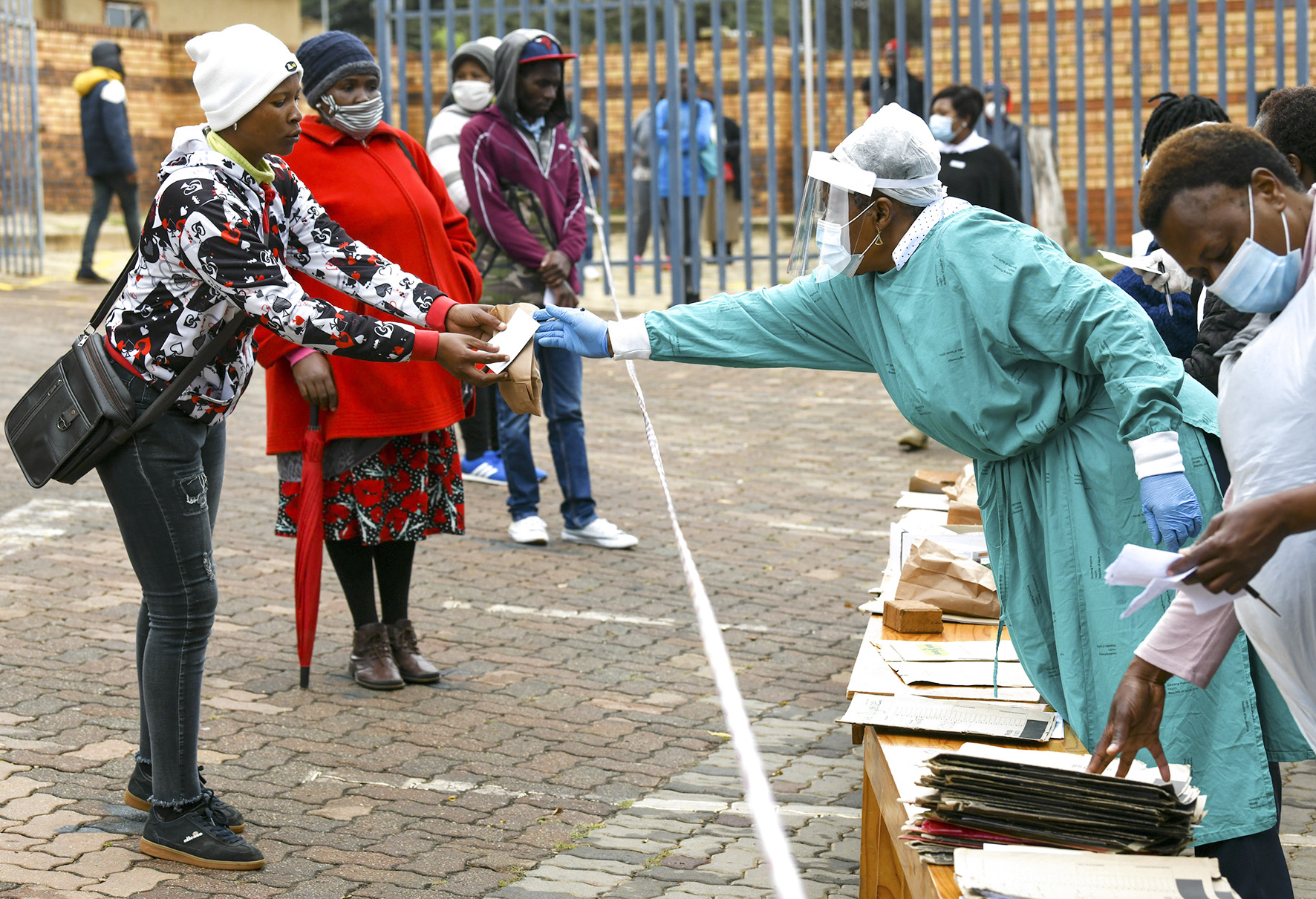
Social distancing and separate queues for dispensing medicine reduces exposure to the coronavirus. (Photo: Chris Collingridge)
“We saw in clinics that healthcare workers were getting extremely anxious to the point where they didn’t want to come to work. Even where clinics were taking measures, there were still throngs of people clogging up parts of clinics. There were also mixed messages about what services would be continued throughout the pandemic and we want to support clinics to continue with as many services as possible,” she says.
The good news is the interventions are paying off. On a soggy autumn morning in the last days of Level 5 lockdown, the Stretford Clinic is packed as usual by early morning. It’s a different kind of packed from a week or so before though. Instead of the clot of people surging at the entrance gates, people are lined up on either side of the pavements standing behind yellow lines newly painted on the ground. To one side are pregnant women and mothers with babies, on the other are general patients.
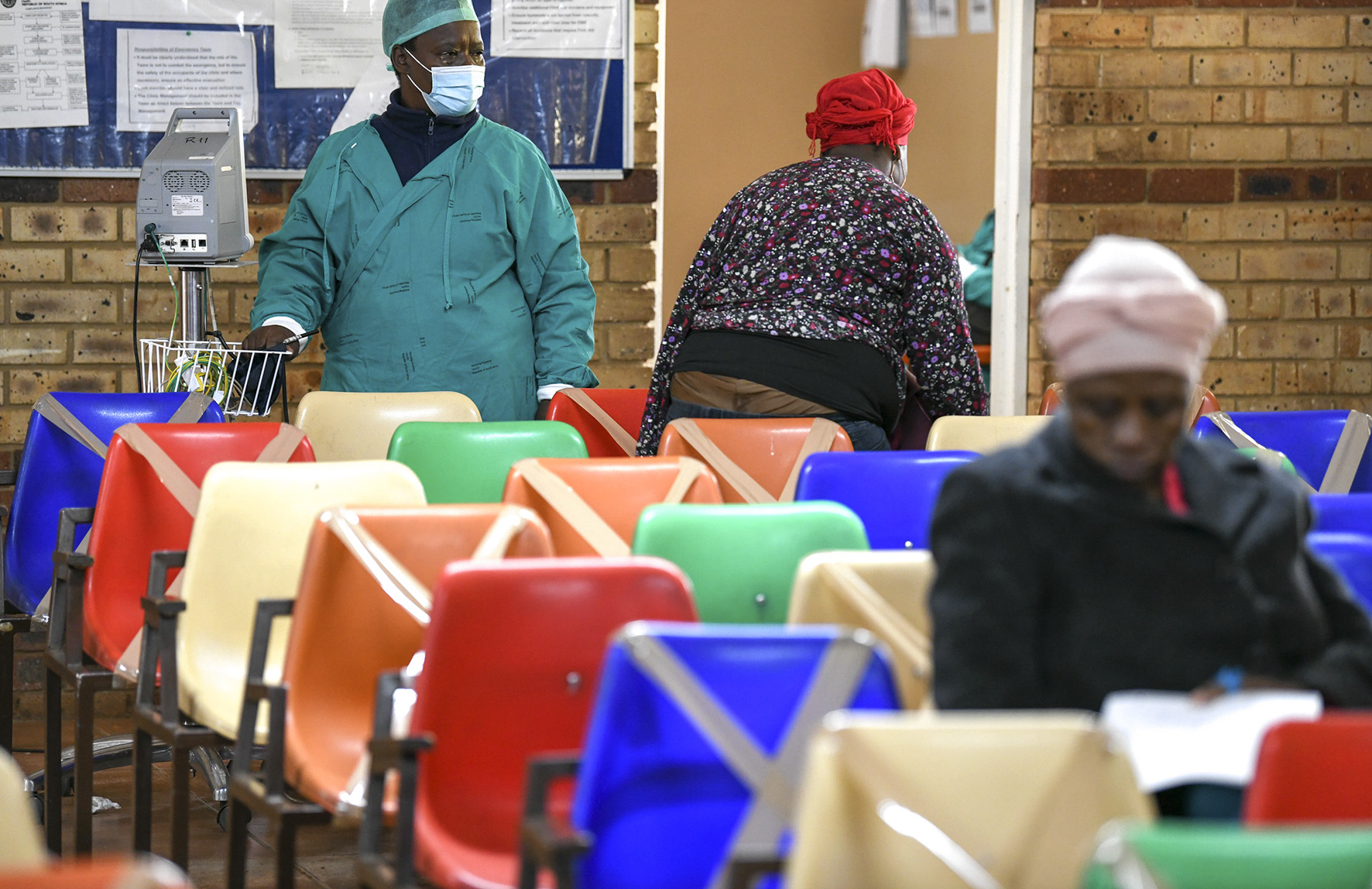
The deliberate restriction of seat availability encourages social distancing as people wait.
(Photo: Chris Collingridge)
Chit-chat is muted and muffled behind masks and scarves. There’s quiet adherence to the new system that’s being implemented with palpable seriousness. Even the vendors selling bags of fruit on the pavement are now hawking face masks. Only the few chickens weaving through people’s legs on the pavement and the clinic grounds seem like the old familiar.
Sister Jabulile Mthembeni is outside the clinic entrance, speaking through a loudhailer in isiZulu, Sepedi and SeSotho. She’s the clinic’s operational manager and she’s reminding people in the queues to keep behind the lines and to keep their face masks on.

A Wits medical student uses disinfectant to clean the waiting seats between test patients. The students have volunteered to help medical staff during Initial screening procedures which are carried out on people presenting possible symptoms of the coronavirus. (Photo: Chris Collingridge)
“People queue here from 6 or 6.30 in the morning before the clinic opens so we don’t want them to be standing here for long hours when we are battling to keep physical distancing.
“This is better than before,” she says of the painted lines that are visible guides for patients. She still has to interrupt herself to tell people to wait or to advance at the right times – it’s a new normal everyone is still getting used to. But the queue keeps moving and that’s the point.

Coronavirus swab testing. (Photo: Chris Collingridge)
Once given a squirt of sanitiser by a security guard at the single access point, every person proceeds to the yellow zone in the clinic for screening. Splitting operations areas into zones is a key step in infection control. Screening takes place under gazebos in the parking lot.
Being outdoors is essential because good ventilation is a known defence against the spread of the virus and it also reduces the number of people inside the clinic at any time. Standing behind another set of painted lines, patients answer questions as part of the initial screening. They’re then directed either to the orange zone for further Covid-19 screening and testing by a clinician or doctor, or to a lower risk blue zone.
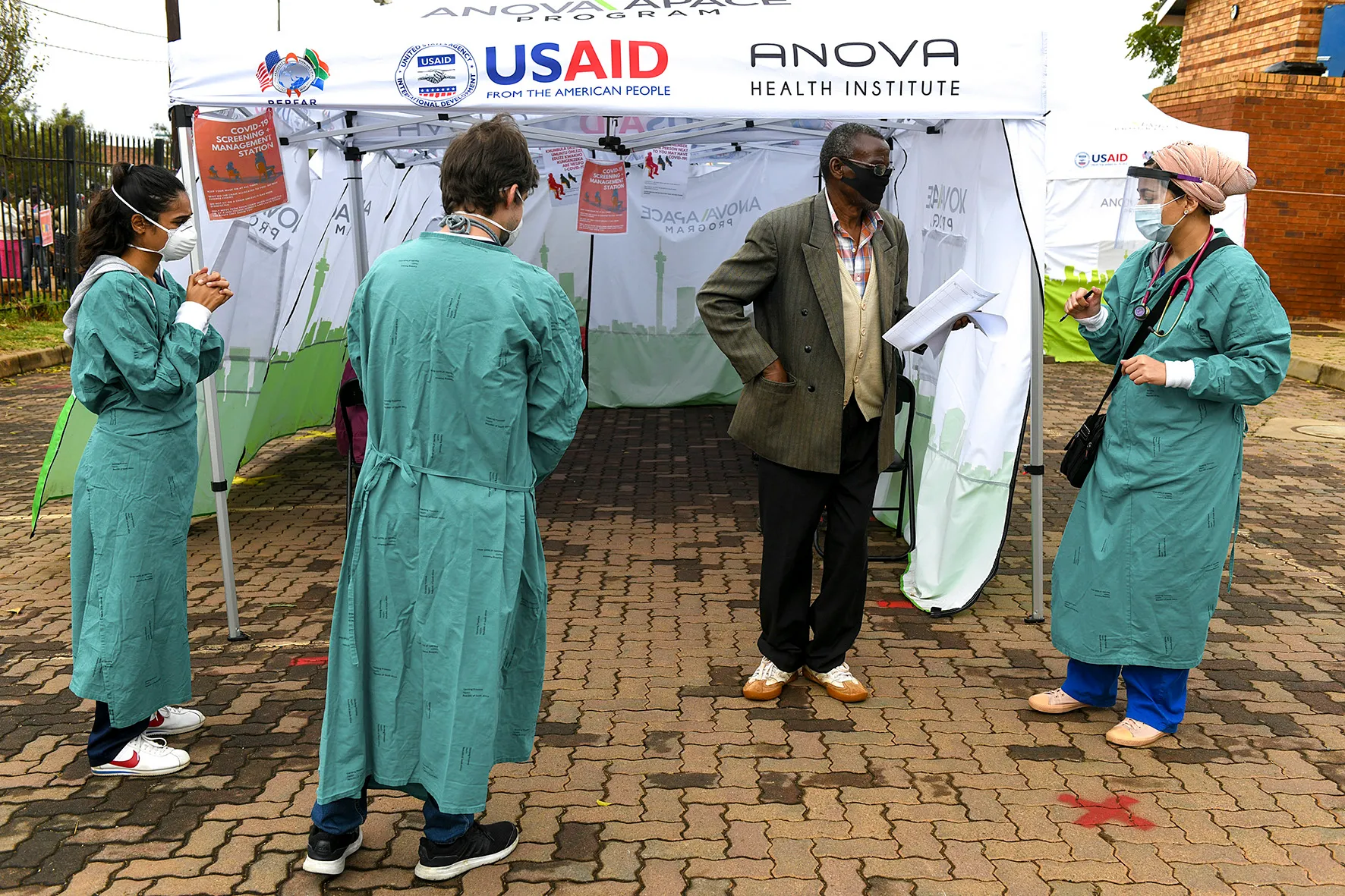
Initial screening procedures are carried out on people presenting possible symptoms of the coronavirus. (Photo: Chris Collingridge)
Blue zone patients go to their relevant departments to pick up chronic medicines or see a nurse or doctor or both. As many services as possible have been kept outdoors in gazebos to optimise the ventilation benefits. Those in the mother and child unit or those who have to see a clinician or doctor follow a one-way route through the clinic. One-way direction flow is marked by arrows on the floors and is a way to minimise cross-infection.
At waiting areas in the blue zone, every second chair or space on a bench is marked off with a masking tape cross to stop people from sitting too closely together. It’s a precaution against patients who may be infected but are asymptomatic.
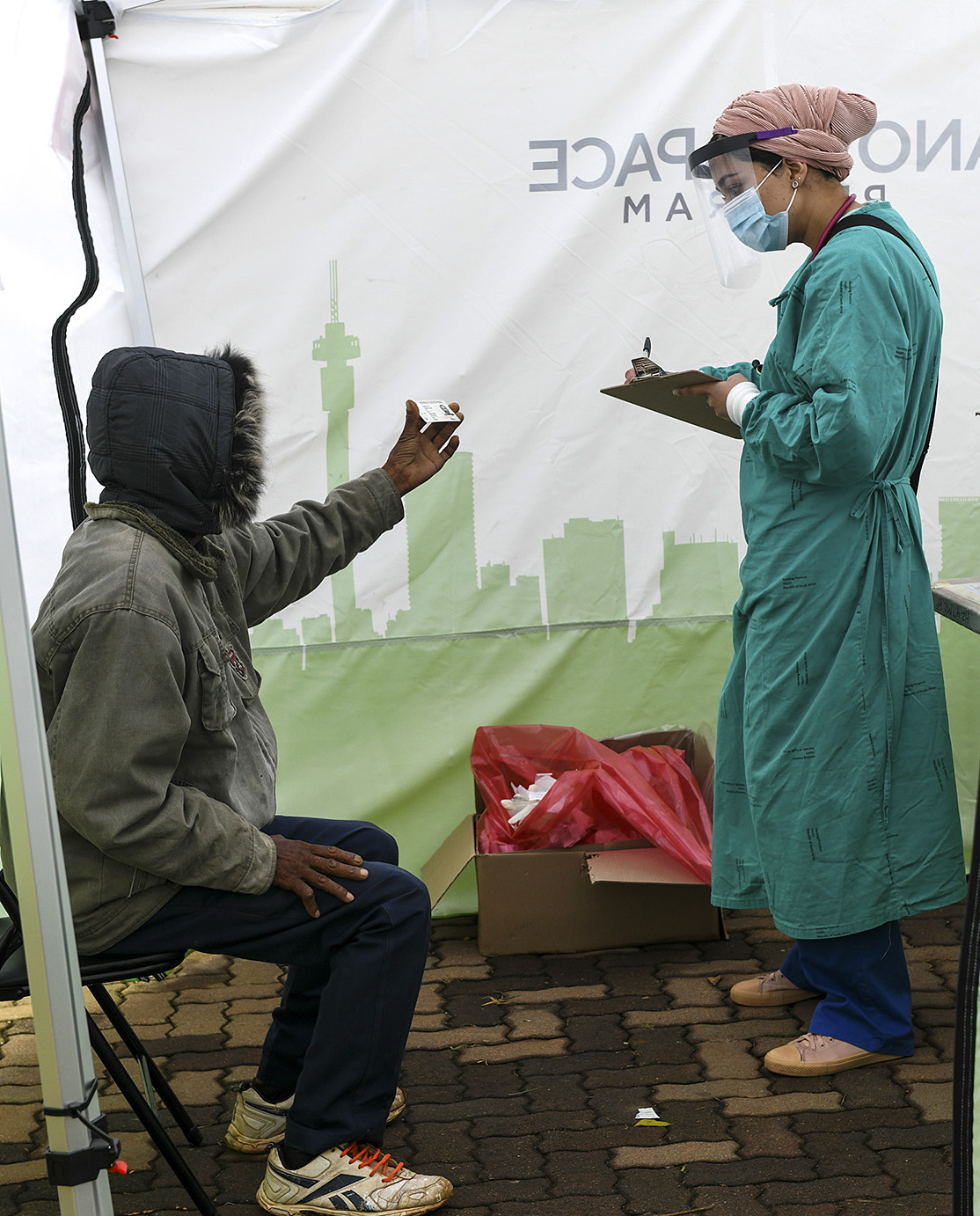
Strict information gathering protocols are followed as Initial screening procedures are carried out on people presenting possible symptoms of the coronavirus. (Photo: Chris Collingridge)
Back at the orange zone, which is also set up in the parking lot under gazebos, patients sit in chairs spaced safely apart. Every vacated chair is disinfected before someone else sits.
Some patients here may have the seasonal flu, some may have TB, but all patients here have some Covid-19 symptoms, so they require testing. They remain in the orange zone throughout their clinic visit. A runner fetches their medicines or files and a clinician or doctor will attend to them in the orange zone. Keeping these patients in the orange zone means they don’t have contact with other patients and potential to spread the virus is reduced.
Patients needing Covid-19 testing become the charge of Sister Shirley Battes at Stretford. “I’m not scared, this is my job and we are taking all the precautions,” she says, peering back through goggles and a visor. In addition to her Orange Farm patients, she also tests all healthcare workers in the clinics every four weeks or if they show Covid-19 symptoms.
Community health worker Zanele Mgoma sits in front of Battes for her first routine Covid-19 tests.
“I tell my patient to relax and that it will feel like an irritation, but it’s not painful,” says Battes as she asks Mgoma to tilt her head back and inserts the swab that looks like a long ear-bud into Mgoma’s nostril right to the back of her nasal passage.
“I make a figure of eight to get a good sample and then it’s done,” she says.
For Mgoma, a little tear rolls down her cheek from the reaction of the swab up her nasal passage. “It wasn’t sore, just uncomfortable. I’m glad I’ve done this test now because I was scared wondering if I have the virus or not and coming to work here and then going home to my family,” she says.
Mgoma’s test is one of an estimated 2,500 done a day that the national laboratories can handle for Gauteng, Limpopo and Mpumalanga. According to the National Health Laboratory Service, their testing capacity across the country was meant to increase to process 36,000 tests in 24 hours by April 2020.
Currently, it can take up to 72 hours for a result in the public health service for test results and capacity is constrained. Patients should self-isolate till they receive their test results directly from the labs, not their clinics, and if they test positive, they are meant to self-isolate for 14 days.
Wilkinson is pleased things are slotting into place, but she knows the pandemic thrives in complacency and there’s room for improvement.
“We need all 4,000 clinics to be funded to set up these intervention measures and for all clinics to be resourced to perform Covid-19 testing – patients cannot be sent from facility to facility. Lab capacity must also be improved and communication of test results to patients must be better,” she says.
By 12.30pm at Stretford Clinic, all patients have made it through the front gates following all safety guidelines. Operations in a now triaged facility are ticking along – it may not be perfect, but it’s the best hope that prevention really is better than cure. DM/MC
"Information pertaining to Covid-19, vaccines, how to control the spread of the virus and potential treatments is ever-changing. Under the South African Disaster Management Act Regulation 11(5)(c) it is prohibited to publish information through any medium with the intention to deceive people on government measures to address COVID-19. We are therefore disabling the comment section on this article in order to protect both the commenting member and ourselves from potential liability. Should you have additional information that you think we should know, please email [email protected]"




 Become an Insider
Become an Insider